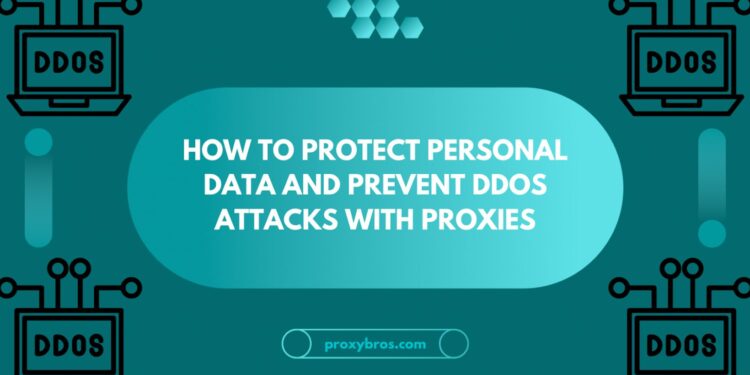I’ve recently realized how critical protecting personal data is amid rising cyber threats like Distributed Denial of Service (DDoS) attacks. Moreover, I realized that proxies may serve as vital tools by shielding identities and mitigating DDoS risks. Below, I’ll explain how ProxyBros explores its role in enhancing data security and defending against such online threats.
Personal Data Protection with Proxies
Ensuring personal data protection through proxy servers involves understanding their fundamental roles and capabilities. Proxies act as intermediaries between users and the internet, obscuring real IP addresses to enhance anonymity. Residential proxy servers utilize IP addresses assigned by Internet Service Providers (ISPs), offering genuine geographic locations yet potentially slower speeds.
Datacenter proxies, on the other hand, provide faster connections with IP addresses from data centers but lack geographic authenticity.
Mobile proxies utilize IPs from mobile carriers, offering both speed and mobile device compatibility.
Moreover, my proxy for using WhatsApp, for instance, also secures connections through encryption, crucial for preventing data interception. HTTPS proxies specifically ensure secure data transmission over encrypted channels.
Besides, proxy servers can thwart data harvesting attempts by blocking trackers and malicious scripts, thus safeguarding personal information from unauthorized access and exploitation.
Understanding these proxy types and their security implications aids in effectively protecting personal data against cyber threats.
Preventing DDoS Attacks with Proxy Servers
Proxies are essential tools in mitigating Distributed Denial of Service (DDoS) attacks due to their versatile capabilities:
Traffic Routing and Load Balancing
- Proxy servers distribute incoming traffic across multiple servers.
- They balance loads to prevent server overload during DDoS attacks.
IP Masking
- Conceals server IP addresses from potential attackers.
- Adds an additional layer of security by hiding the server’s actual location.
Automated Threat Detection
- Monitors incoming traffic for suspicious patterns.
- Identifies and blocks malicious traffic indicative of DDoS attacks.
Rate Limiting and Filtering
- Implements rules to limit request rates from clients.
- Filters out malicious traffic to protect servers from overload.
Proxy servers employ these methods and, thus, enhance cybersecurity by fortifying defenses against DDoS attacks, ensuring stable and secure server operations even under attack.
Implementing Proxies for Security
Choose the Right Proxy Solution
Select proxy servers based on your specific needs for personal data protection and DDoS prevention.
I advise evaluating factors like proxy type (residential, datacenter, mobile), encryption capabilities, and compatibility with existing infrastructure.
Configure Ideal Practices
Configure proxies to maximize security and performance. Set up proper authentication, encryption protocols (e.g., HTTPS), and traffic filtering rules to block malicious content.
Integrate with Existing Security Measures
Integrate proxy servers easily with firewalls, VPNs, and anti-DDoS systems. Beforehand, I recommend you ensure proxies complement these measures to provide a layered defense against cyber threats.
Study Case Studies and Examples
Explore real-world applications where proxy servers have successfully enhanced security. Case studies demonstrate how proxies mitigate DDoS attacks and safeguard personal data across various industries, ensuring reliable and secure operations.
I can guarantee that implementing proxies in this structured approach strengthens cybersecurity defenses, mitigates risks, and safeguards critical assets from malicious activities and disruptions.
And, Continuously Monitor!
Regular Updates and Maintenance
Ensure proxy servers are regularly updated to patch vulnerabilities and improve performance.

I remind you that scheduled maintenance keeps proxy settings robust against evolving threats.
Monitoring for Emerging Threats
Proactively monitor proxy traffic for signs of new cyber threats. I recommend implementing threat intelligence feeds to stay ahead of emerging risks and adapt defenses accordingly.
Performance Tracking
Monitor proxy performance metrics like latency, throughput, and uptime. Analyze logs and reports to verify proxies effectively protect against data breaches and mitigate DDoS attacks, ensuring continuous security and operational integrity.





















